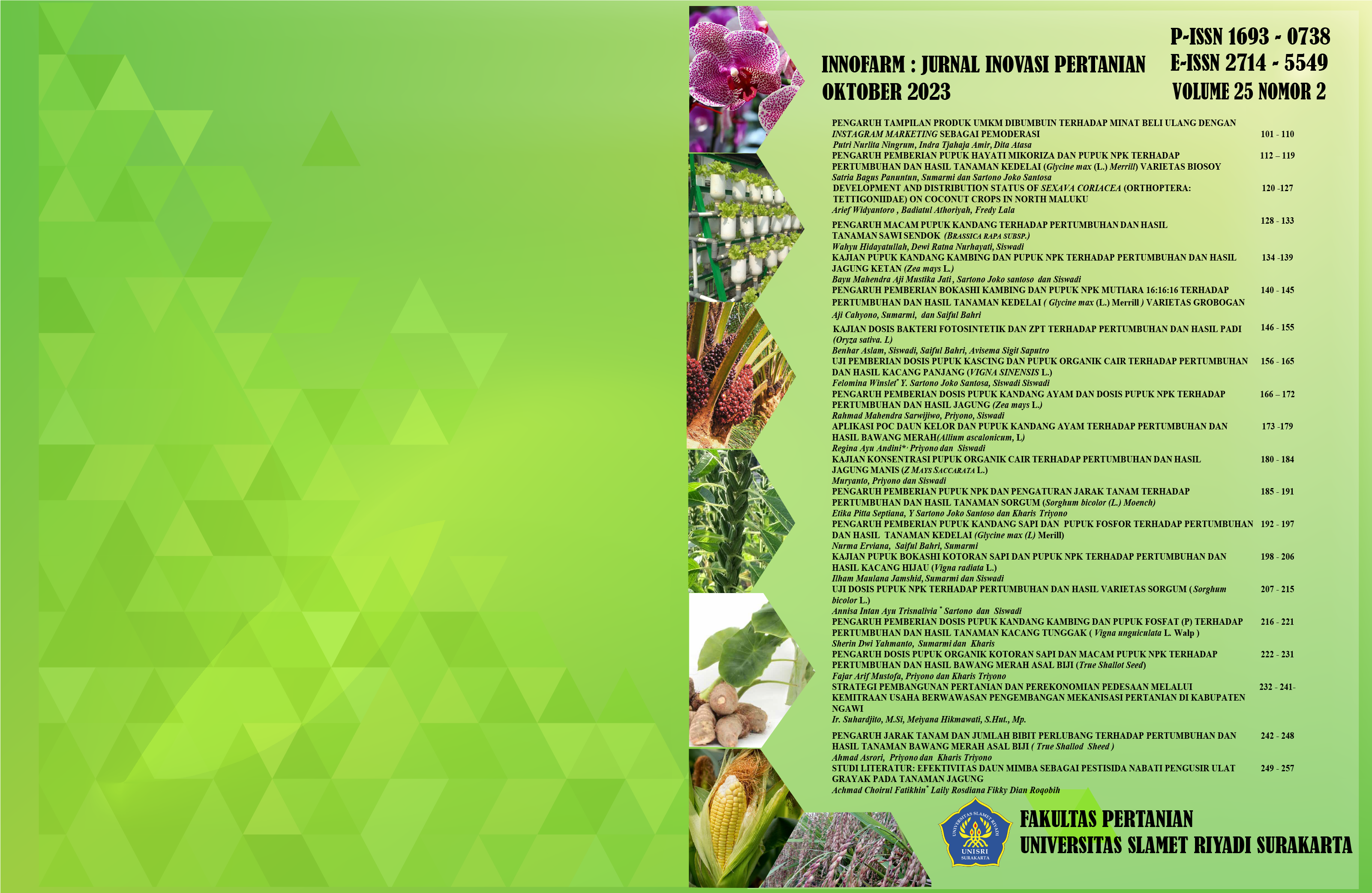Application of Moriangan Leaves LOF and Chicken Manure Fertilizer on the Growth and Yield of Shallots (Allium ascalonicum, L)
Moringa leaf liquid organic fertilize; chicken manure fertilizer; shallot
DOI:
https://doi.org/10.33061/innofarm.v25i2.9542Abstract
To Fulfill soil nutrients can be done by providing organic and inorganic fertilizers, but use of inorganic materials can damage the soil due to contamination of chemicals. Therefore, this research was conducted to analyze the effect of moringa leaf LOF and chicken manure fertilizer on the growth and yield of shallot plants. This study used a Completely Randomized Block Design (RAKL) which consisted of 2 treatment factors which each factor consisted of 3 levels and was repeated 3 times. The first factor was the concentration of moringa LOF: K0 (control), K1 (200 ml/l) and K2 (400 ml/l). The second factor is: P0 (control), P1 (40 g/plant) and P2 (80 g/plant). Observational data were analyzed using analysis of variance (ANOVA) and continued with the BNT test with a level of 1%. Parameters observed included, number of leaves, plant height, tuber fresh weight, number of tubers clumping, tuber diameter and tuber dry weight. The results showed that the best treatment, is dosing of chicken manure dose of 10 tonnes/ha with a fresh tuber weight yield of 28.53 g/plan or 7.13 tonnes/ha and a dry tuber weight of 21.83 g/plant or 5.46 tonnes/ha.Downloads
Published
2023-10-31
Issue
Section
Artikel
License
Copyright (c) 2023 Regina Ayu Andini, Priyono Priyono, Siswadi Siswadi

This work is licensed under a Creative Commons Attribution-NonCommercial 4.0 International License.
Authors who publish this journal agree to the following terms:
- Authors retain copyright and grant the journal right of first publication with the work simultaneously licensed under a Creative Commons Attribution License that allows others to share the work with an acknowledgement of the work's authorship and initial publication in this journal.
- Authors can separately make additional contractual arrangements for non-exclusive distribution published by the journal (e.g., publish it in a book), with an acknowledgement of its initial publication in this journal.
- Authors are allowed and encouraged to send their work via online (e.g., in the institutional repositories or their website) after published by the journal.


















